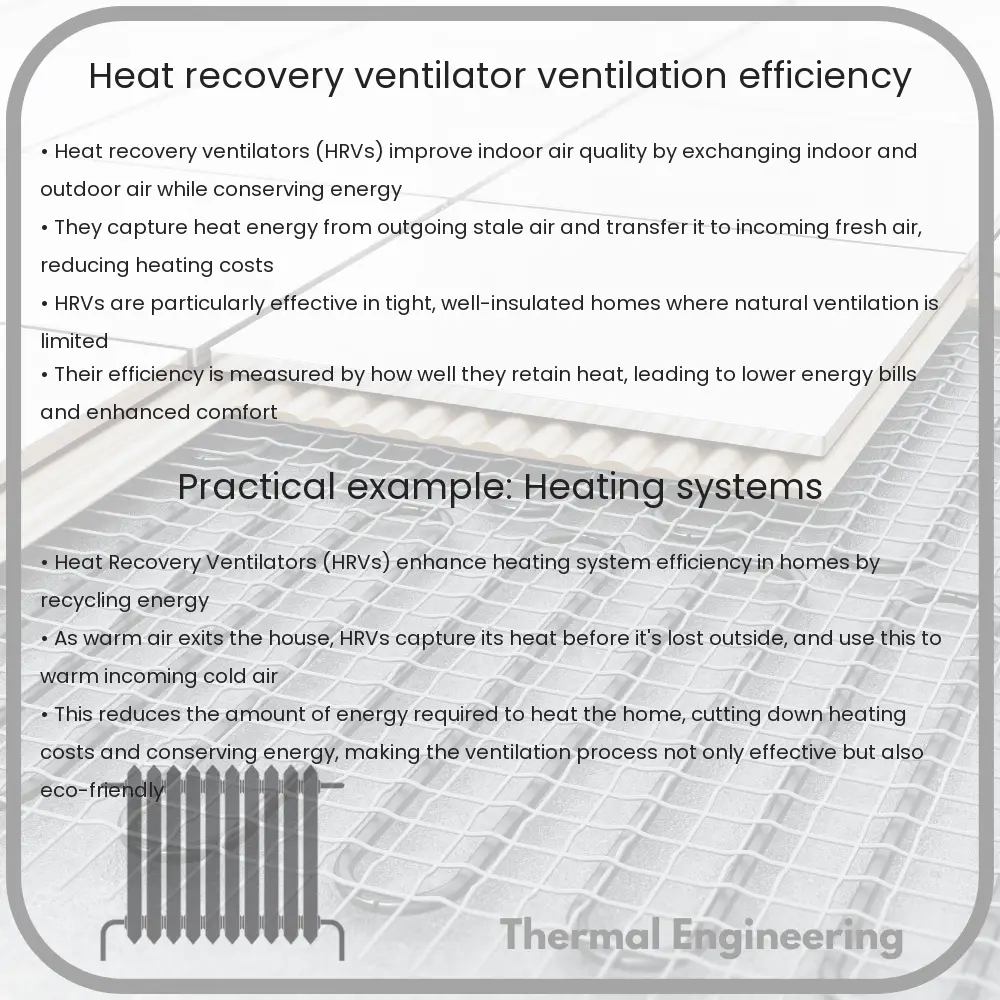Learn about Heat Recovery Ventilators (HRVs), their importance in energy-efficient building designs, and how they enhance indoor air quality and comfort.

Understanding Heat Recovery Ventilators and Their Efficiency in Ventilation
Heat recovery ventilators (HRVs) are key components in modern building designs, especially with the increasing focus on energy efficiency. An HRV system helps in maintaining a healthy and comfortable indoor environment by effectively managing the air quality and energy used in heating and ventilation processes.
What is a Heat Recovery Ventilator?
A heat recovery ventilator is an eco-friendly system designed to provide fresh air into a building while minimizing energy loss. The HRV system works by extracting stale indoor air and simultaneously bringing in fresh outdoor air. This exchange of air occurs within the HRV unit where the heat from the outgoing air is transferred to the incoming cold air during the winter. Conversely, in the summer, the cooler indoor air can precool the warmer incoming air. This process significantly reduces the energy demands on heating and cooling systems.
Components of HRVs
- Heat Exchanger: The core component where the heat transfer between outgoing and incoming air takes place without mixing the airstreams.
- Fans: One fan draws fresh air into the building, while another expels the stale air.
- Filters: These clean incoming and outgoing air, ensuring that dust, pollen, and other pollutants are removed.
- Controls: System controls allow users to adjust settings such as fan speeds and operation modes to optimize performance and comfort.
How HRVs Enhance Ventilation Efficiency
HRVs improve the overall efficiency of building ventilation systems by recovering approximately 70% to 95% of the heat that would otherwise be lost in conventional exhaust ventilation systems. This high level of heat recovery is made possible by the heat exchanger within the HRV. The efficiency of an HRV system is often measured by its heat recovery efficiency, which can be calculated with the following formula:
Heat Recovery Efficiency (%) = (Heat Transferred / Heat in Exhaust Air) * 100
Furthermore, HRVs ensure that the indoor air quality is maintained as the system provides a constant supply of fresh air. This reduces pollutants and moisture, which can lead to mold growth and other issues associated with poor air quality.
Benefits of Installing an HRV
- Energy Savings: By recovering heat from exhaust air, HRVs reduce the energy needed for heating new incoming air, leading to lower heating costs.
- Improved Air Quality: Continuous exchange of air helps in removing pollutants and allergens from indoor air, enhancing the health and comfort of occupants.
- Moisture Control: Reduces the likelihood of mold growth and structural damage by managing the humidity levels within the building.
- Environmentally Friendly: Lower energy consumption results in reduced greenhouse gas emissions, contributing to environmentally sustainable building practices.
Choosing the Right HRV for Your Needs
Selecting an HRV system requires consideration of various factors such as climate, size of the building, insulation levels, and specific air quality needs. It is often advisable to consult with HVAC professionals to ensure that the system is properly sized and optimized for efficiency and performance in your specific environment.
In conclusion, heat recovery ventilators play a crucial role in modern building ventilation systems, offering an effective way to improve indoor air quality while reducing energy consumption and environmental impact. Whether retrofitting an older building or integrating into new construction, HRVs represent a smart investment towards achieving a more sustainable and comfortable indoor environment.